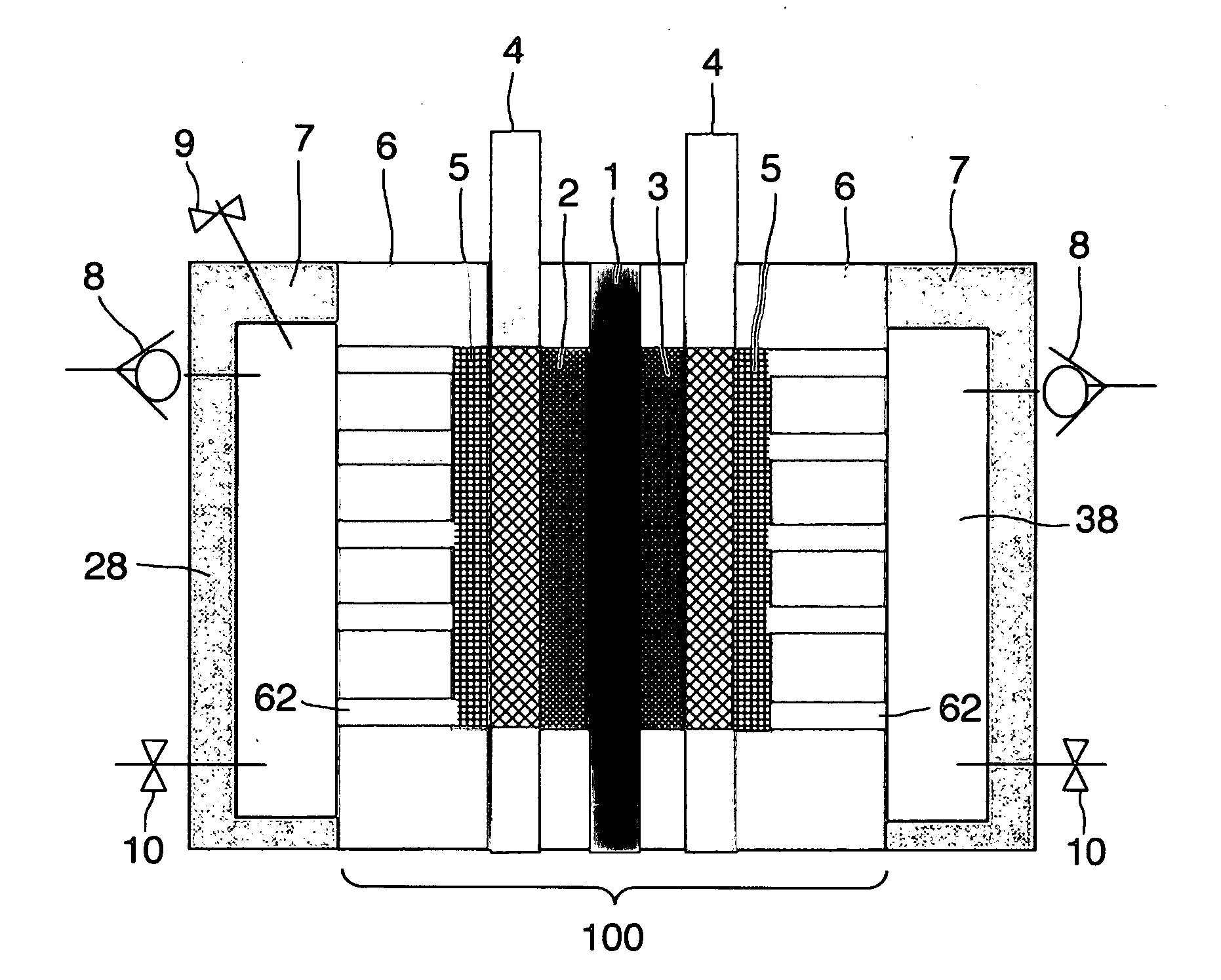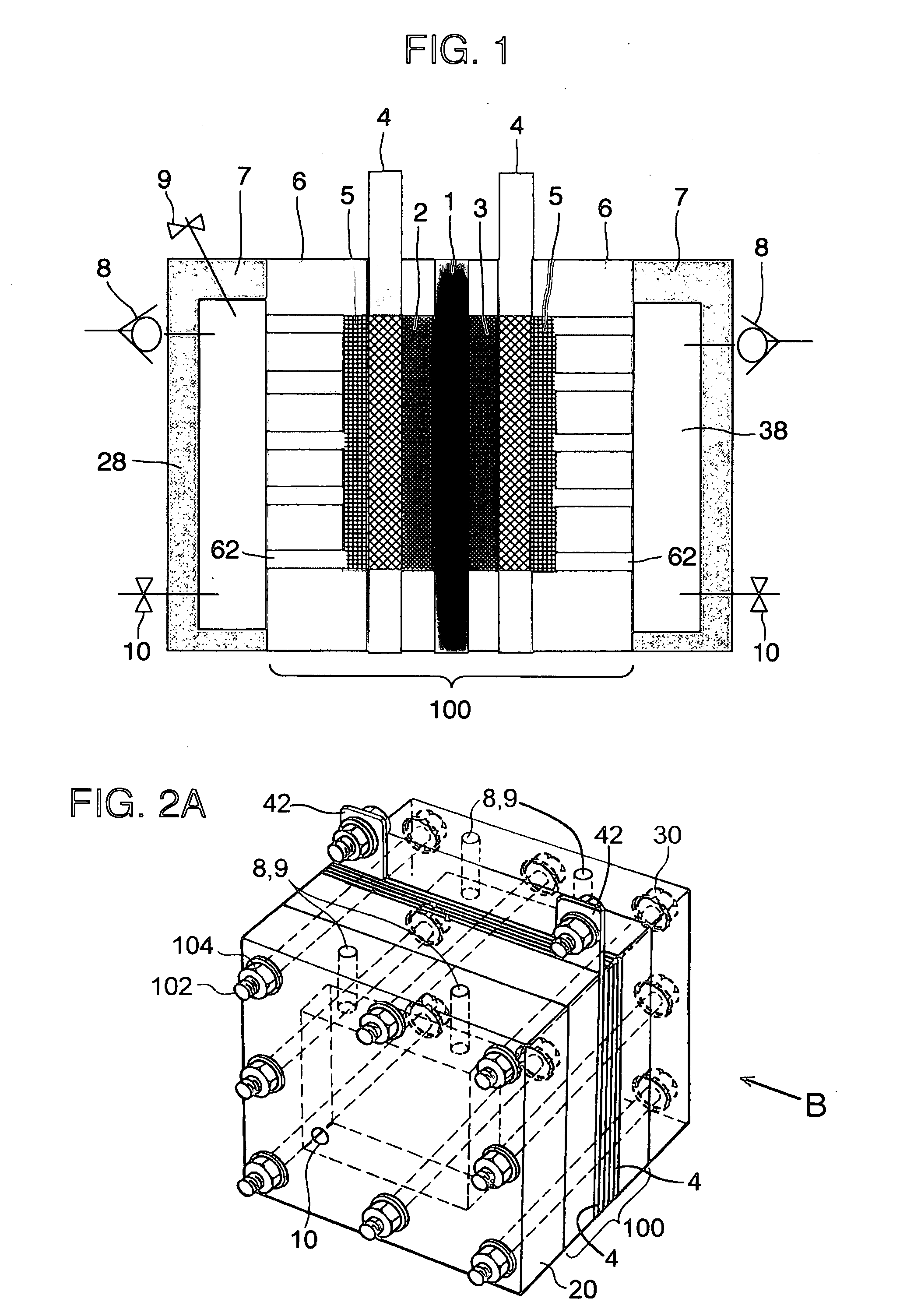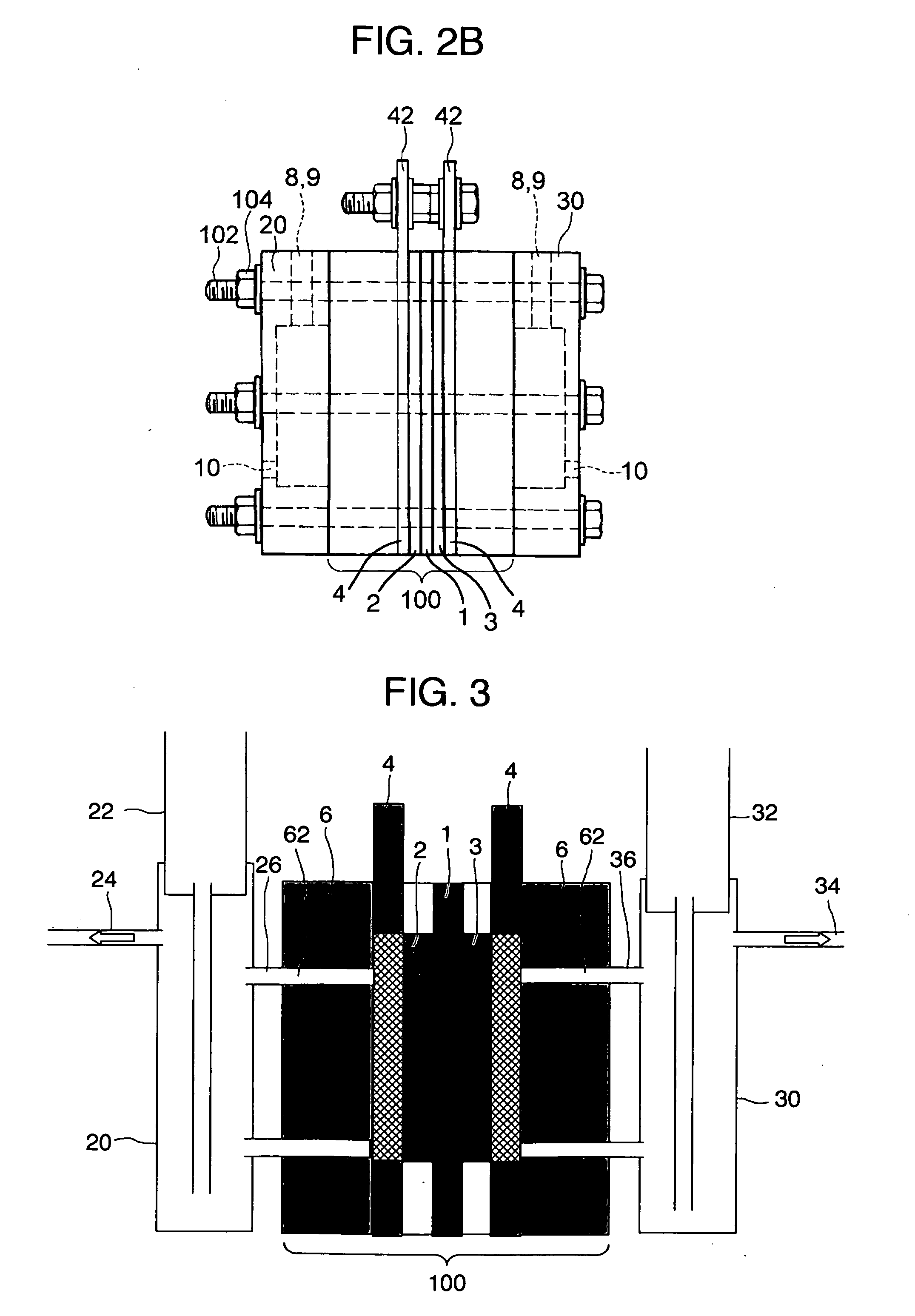Solid polymer membrane-type water-electrolysis apparatus
a water-electrolysis and membrane-type technology, applied in the field of solid polymer membrane-type water-electrolysis apparatus, can solve the problems of limited storage volume of hydrogen and oxygen, limited transportation and storage of apparatus, and increase in size and weight of the entire apparatus, so as to achieve convenient washing
- Summary
- Abstract
- Description
- Claims
- Application Information
AI Technical Summary
Benefits of technology
Problems solved by technology
Method used
Image
Examples
Embodiment Construction
[0032] An embodiment of the present invention will now be described with reference to FIGS. 1, 2A and 2B.
[0033]FIG. 1 is a sectional view for explaining a solid polymer membrane-type water-electrolysis apparatus according to an embodiment of the present invention; FIGS. 2A and 2B show one example of the same solid polymer membrane-type water-electrolysis apparatus. FIG. 2A is a perspective view and FIG. 2B is a side view taken in a direction of an arrow B in FIG. 2A. This solid polymer membrane-type water-electrolysis apparatus includes an electrolytic cell 100 comprising a solid polymer electrolyte membrane 1 made of a material of perfluorocarbon sulfonic acid polymer or the like, an oxygen electrode 2 which is disposed on one side of the solid polymer electrolyte membrane 1 and which is formed by forming a coated layer of a mixture including a resin for a solid polymer electrolyte membrane on a porous sheet-shaped carbon material plated with iridium, a hydrogen electrode 3 which ...
PUM
| Property | Measurement | Unit |
|---|---|---|
| Pressure | aaaaa | aaaaa |
| Elasticity | aaaaa | aaaaa |
Abstract
Description
Claims
Application Information
 Login to View More
Login to View More - R&D
- Intellectual Property
- Life Sciences
- Materials
- Tech Scout
- Unparalleled Data Quality
- Higher Quality Content
- 60% Fewer Hallucinations
Browse by: Latest US Patents, China's latest patents, Technical Efficacy Thesaurus, Application Domain, Technology Topic, Popular Technical Reports.
© 2025 PatSnap. All rights reserved.Legal|Privacy policy|Modern Slavery Act Transparency Statement|Sitemap|About US| Contact US: help@patsnap.com



